Workday Training in New York City, New York, USA
Workday HCM Tutorial
Managing Workday HCM Organisational Structure
Workday HCM facilitates seamless management of organisational structures. Consider XYZ Motors, a company with multiple support units such as sales and manufacturing.
With Workday HCM, superior and subordinate organisations can be configured effectively. For example, rules can be defined to distinguish between management levels managers in the U.S. and supervisors in the U.K., ensuring clarity and exclusivity.
Workday HCM Tutorial in New York City also simplifies the process of adding specific conditions, such as organisational hierarchies and eligibility criteria for different roles.
Streamlining Workday HCM Rule Creation
Workday HCM makes rule creation straightforward. Simply start by setting mutually exclusive conditions across various organisations – for instance, XYZ Motors as its top-level entity, while labelling individual sales teams or manufacturing facilities under it as subordinate units.
This is particularly useful in the Workday HCM tutorial in the USA, as the platform provides clear guidance for users.
Workday HCM simplifies the selection process with automatic selection based on the first fulfilled condition, making selection easier than ever.
Rules may be written or visualised using tools like Excel to test them extensively against both positive and negative scenarios for comprehensive eligibility rule evaluation. 9.5 Experiment Testing Eligibility Rules.
Testing Workday HCM Eligibility Rules
Workday HCM makes testing eligibility rules straightforward. With just the click of a mouse, you can view eligible workers who meet specific conditions or perform individual worker tests, ideal whether you need quick yes-or-no results or an exhaustive list.
This functionality is particularly useful for those participating in the Workday HCM Tutorial in New York City. Positive and negative tests should be run regularly to ensure accurate rule implementation.
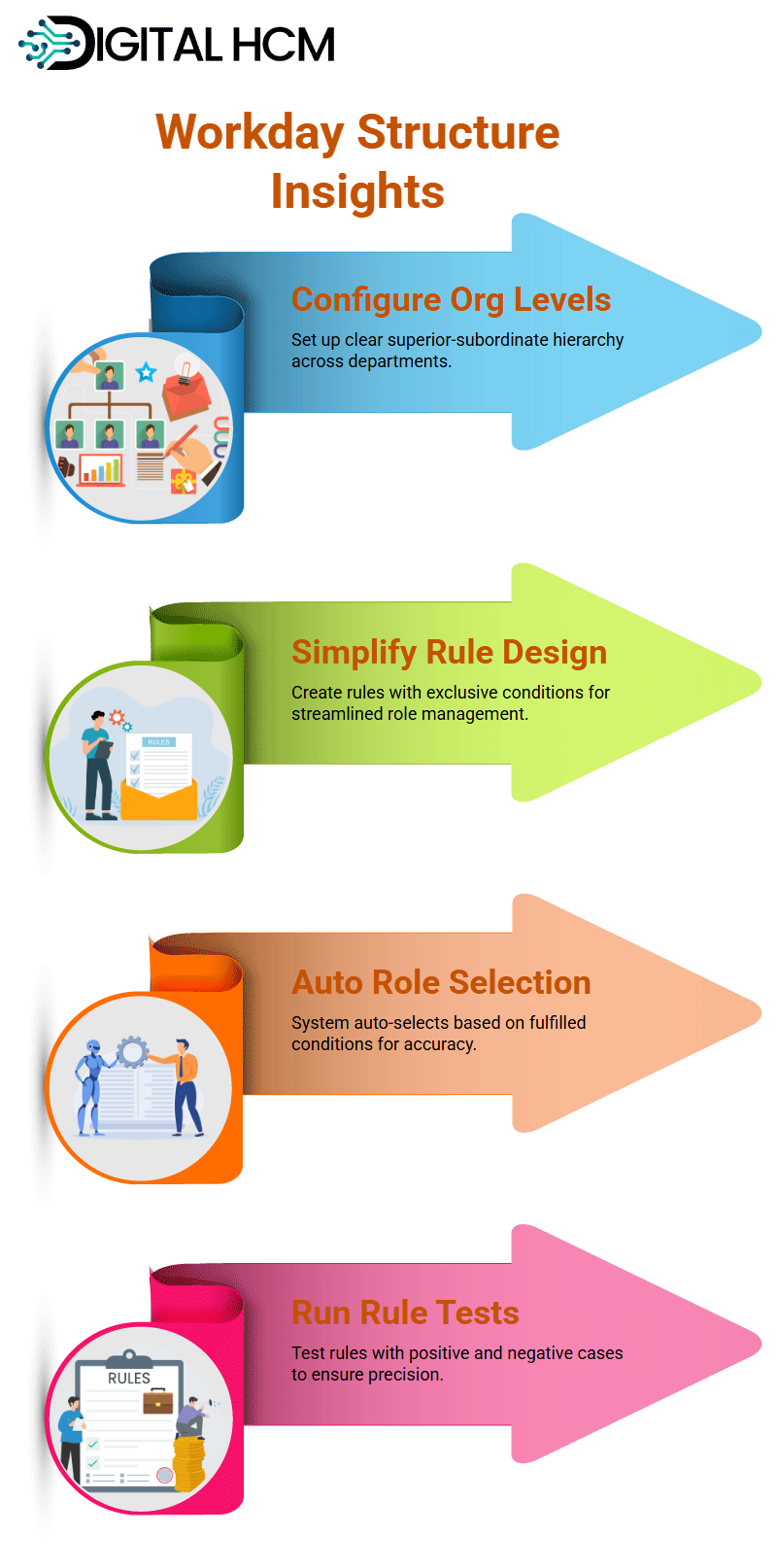
Compensation Features Workday HCM
Wage Day HCM also allows employers to integrate compensation plans directly into payroll earnings using features like car allowances or commissions as a source of payments.
Workday HCM makes it simple for employees to define how their compensation varies according to different categories, while grade profiles help assign workers to specific compensation ranges when necessary.
This flexibility ensures fair and tailored packages for workers. For those looking for a Workday HCM tutorial in New York, these features can be crucial in understanding how to effectively manage and implement compensation strategies within your organisation.
Workday HCM makes it simple for employees to define how their compensation varies according to different categories, while grade profiles help assign workers to specific compensation ranges when necessary.
This flexibility ensures fair and tailored packages for workers. For those looking for a Workday HCM tutorial in New York, these features can be crucial in understanding how to effectively manage and implement compensation strategies within your organisation.
Workday HCM Grades and Profiles
To ensure consistent compensation guidelines, Workday HCM uses grades and grade profiles. Grades provide a general compensation range, while grade profiles offer greater customisation for individual employees.
Employers can leverage these features to effectively manage compensation. Workday HCM tutorial in the USA allows organisations to assign employees to customised compensation ranges based on their profiles.
Each employee is placed within a clearly defined and appropriate compensation range that suits their specific situation, making it easier for Workday employees to handle all payroll needs from a single platform.
This comprehensive approach enables organisations in the USA to implement fair and competitive compensation strategies tailored to their workforce.
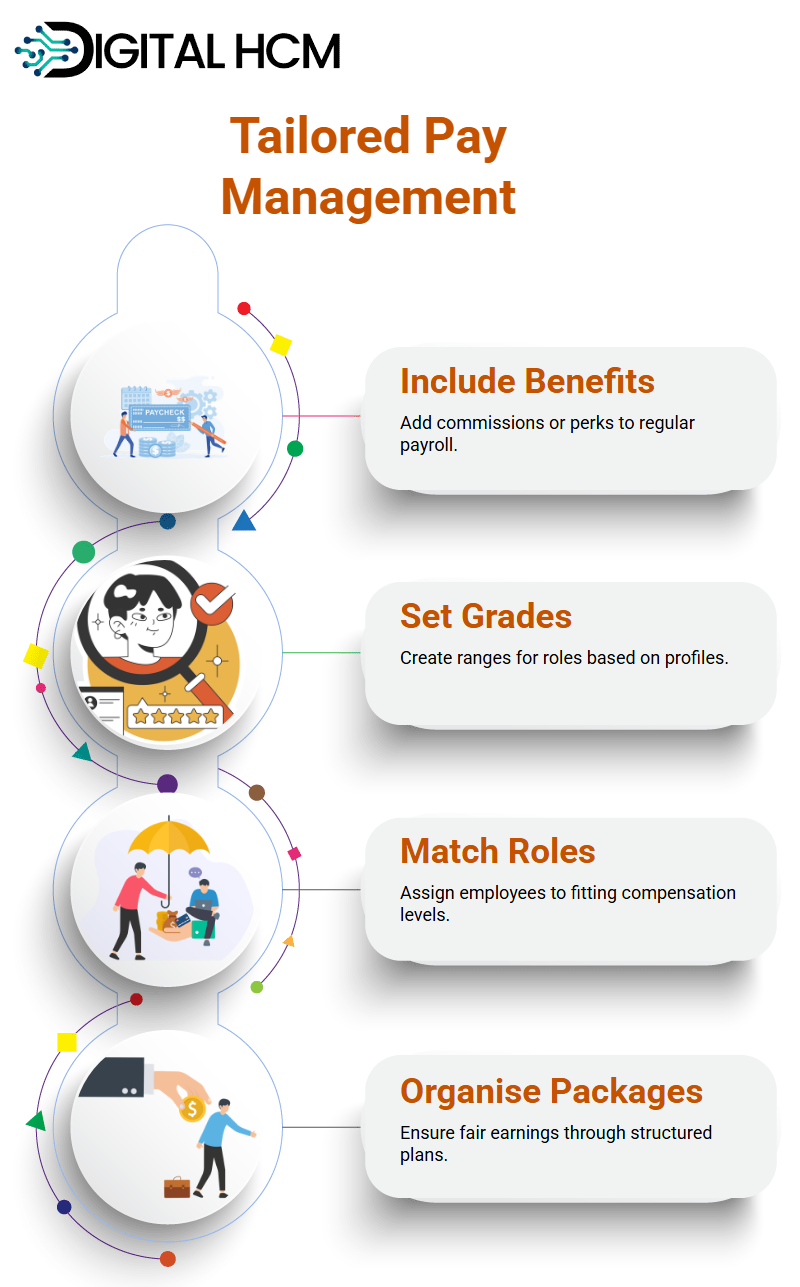
Compensation Grades with Workday HCM
Workday offers Compensation Grades that help provide your workforce with personalised pay plans!
At times, managing compensation grades within Workday HCM may feel like trying to solve an intractable puzzle.
Take this example, you set an annual compensation grade between $80,000 to $80,00 USD for managers in US offices – perfect.
Expanding operations to the UK presents new challenges. After your compensation team establishes competitive market rates for UK manager salaries of PS40,000-PS90,000. Your task now becomes managing multiple currencies and differing employee expectations through Workday HCM.
Imagine managing an Indian manager hiring process where salaries range between Rs Rs10,00,000 to Rs 25.00,000.
Now imagine having to manage three distinct compensation grades within Workday HCMUSD for US compensations, GBP for UK payroll and INR for India payroll costs.
At Workday HCM, having localised compensation ranges is key for successfully managing these complexities.
Currency and Localisation Workday HCM Challenges
Workday HCM allows global employers to manage compensation for a global workforce effectively with its flexible system that adapts to local requirements.
Imagine recruiting in India: should they care about salary ranges in the UK and US? No! Workday HCM makes an invaluable difference by offering localised pay ranges.
Workday HCM introduces grid profiles as an innovative solution, which allows managers to assign employees different compensation ranges depending on their location.
For instance, US managers receive their salaries in USD while those working in the UK typically get it in GBP or INR, respectively.
Localisation ensures transparency and fairness within the system, providing each manager with a relevant pay range.
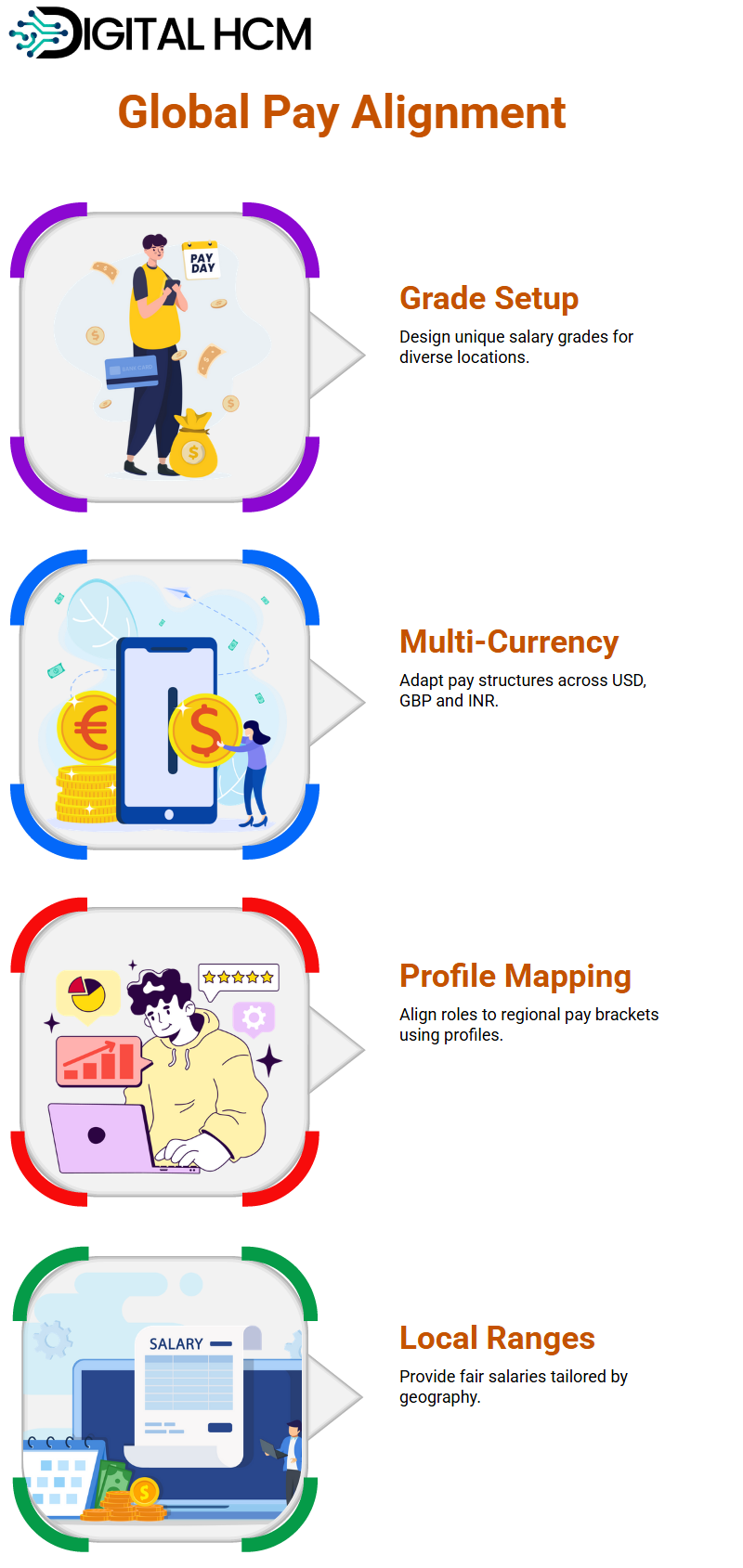
Workday HCM and Supervisory Organisations
Workday HCM acknowledges the varying nature of supervisory organisations. Members within these entities could operate across countries with differing currencies and compensation structures.
Workday HCM makes life simple for employers by streamlining operations. For instance, one supervisory organisation might include managers from three continents – the US, the UK and India in this case.
Workday HCM makes global payroll and HR processes simple by assigning each manager compensation grades tailored to their country of operation, making Workday HCM Tutorial in USA essential in handling global payroll challenges and HR intricacies.
Localised Compensation Grades in Workday HCM
No matter if it be in the US, UK or India, each country’s compensation guidelines are respected and applied appropriately when hiring in different markets, ensuring compensation reflects local standards accurately.
This capability is absolutely key when hiring across diverse markets to ensure compensation matches local expectations accurately.
Workday HCM makes assigning location-specific compensation grades efficient – it is also vitally necessary in today’s globalised workforce.
By customising pay structures to specific regions, Workday HCM Tutorial in New York City helps organisations attract and retain top talent worldwide.
Workday HCM Pay Ranges
Workday HCM makes managing different pay ranges more complicated. But if all employees fall under one range, eliminating grade profiles may simplify matters significantly; for instance, if all workers reside within US borders, you could define one range instead – that should make things much simpler.
Workday HCM gives you the flexibility to localise pay ranges based on different factors like location or role.
Grade profiles allow you to assign specific compensation ranges rather than using an inflexible default range for all employees.
Role of Grade Profiles in Workday HCM
Profiles provide an invaluable solution for localising pay. Creating these grade profiles gives managers more power in controlling this aspect.
Grad profiles allow employers to assign employees to appropriate salary ranges based on their circumstances and needs.
For instance, managing managers in three distinct countries, such as the US, the UK, and India, requires having several grade profiles to accommodate various pay scales efficiently without creating confusion among employees.
At first, it may be useful to establish an initial pay range of zero for any given grade before setting all possible ranges in its grade profiles.
This ensures clarity and accuracy even when dealing with multiple currencies or significant pay differences between categories of employees.
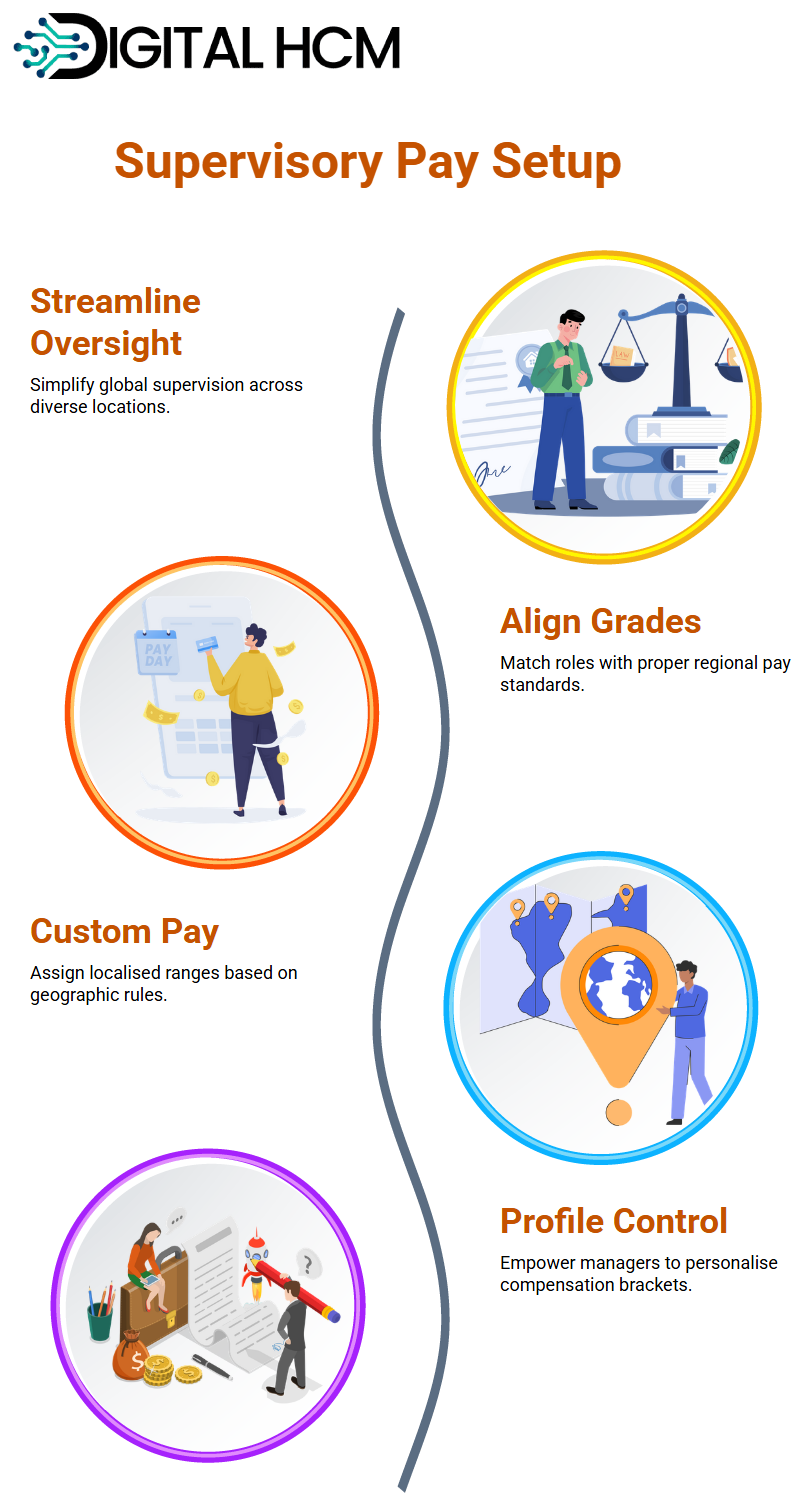
Pay Range Workday HCM Management
In Workday HCM, grade profiles may not always be necessary – for instance, if all managers fall under one pay scale, such as in the US. You could instead define an uncomplicated range.
But when assigning workers with different pay ranges, grade profiles become invaluable.
Employee compensation plans allow you to navigate complex scenarios easily, making sure employees receive appropriate pay based on their location and role. Consider them a strategic tool – use only when required.
Workday HCM Compensation Grades
Within Workday HCM, compensation grades can be broken into subsets known as grade profiles for easier management and setup.
A grade profile can be associated with job profiles when creating them; additional grades can also be added during compensation setup if necessary. Workers can assign grades in two main ways.
Linking grade with job profile is the best approach, including outlining attributes like management level and responsibilities; assigning manager roles at specific grades with set ranges as examples of this practice.
Eligibility rules provide another viable method, permitting compensation grades to be decided based on factors like job family or location.
To create a compensation grade, organisations often employ the “Create Compensation Grade” task. Although grade profiles are optional, including them can add greater flexibility by segmenting pay ranges within each grade and giving organisations insight into employee distribution within pay bands.
Example: Out of employees earning between $50-80K annually, 10 may fall between $50,000-60,000 while 20 between $600-70k; such an analysis helps align compensation strategies with organisational objectives.
Workday HCM Simplifies Compensation
With Workday HCM’s intuitive compensation grade editor, creating grades is made effortless. Simply associate job profiles or set eligibility rules when setting them up, or set eligibility rules to cover more complex scenarios.
Workday HCM offers exceptional flexibility to accommodate the wide-ranging organisational needs, and grade profiles within Workday HCM allow you to add depth to your compensation structure.
Optional but useful features of Workday HCM for analysing pay ranges that extend beyond $50,000-$80,000 include its pay segmentation feature, which helps break this information down efficiently.
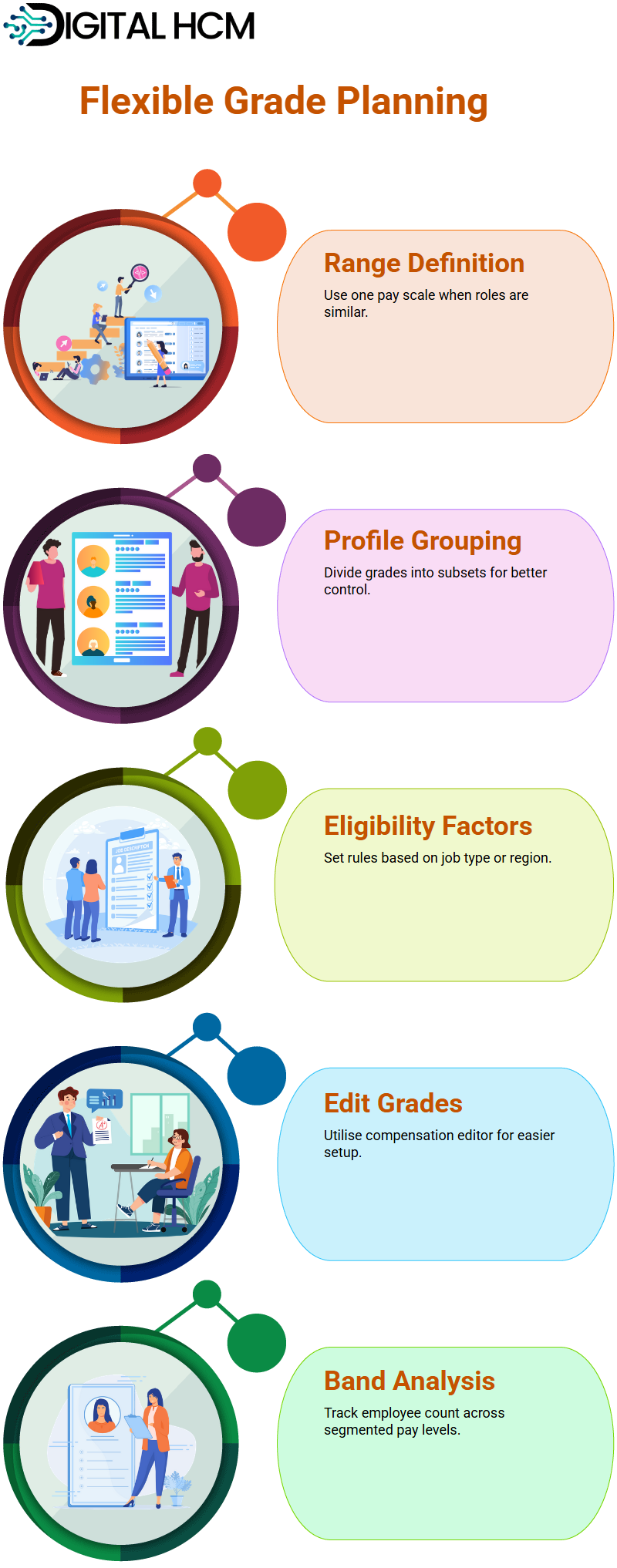
Workday HCM Enables Pay Segs
Have you ever wondered how organisations determine employee pay? With Workday HCM’s employee payroll solution, employee pay can be broken down into meaningful data that shows exactly where compensation is being distributed across their workforce.
Workday HCM helps organisations gain valuable insights into pay structures.
Analysing how managers are compensated is easy: Are most managers being paid at either end of the scale? With Workday HCM’s detailed insights into pay structures.
Take, for instance, a pay range that spans $50k-80k with the midpoint at $65,000: many employees tend to either remain within this bracket or fall below it; insights provided by Workday HCM Tutorial in USA show this could mean most workers may be earning below the midpoint figure.
Identify Workday HCM Compensation Patterns
Reversing pay distribution analyses could open organisations’ eyes. Workday HCM could focus on managers at the higher end of the pay range; data could reveal 27 managers earning between $70,000 and $80,000 and prompt them to reconsider promotions or downsizing strategies.
Workday HCM allows organisations to quickly identify underperformers between $75,000 and $80,000 so that informed decisions about cost cuts can be made.
Managers earning between $50k to $6500 could potentially face less risk because their budget aligns more closely with organisational guidelines.
Workday HCM Can Empower Decision-making
With Workday HCM’s advanced Pay Range Segmentation feature, businesses gain greater insight. Breaking down into smaller increments, such as $5,000, helps with reporting and analytics, while the non-assigned segments become useful tools during audits or decision-making processes.
Workday HCM helps organisations recognise patterns that would otherwise go undetected by analysing these segments.
Dividing pay ranges into 3-5 segments can help identify areas for concern or savings opportunities without burdening the system with too much information.
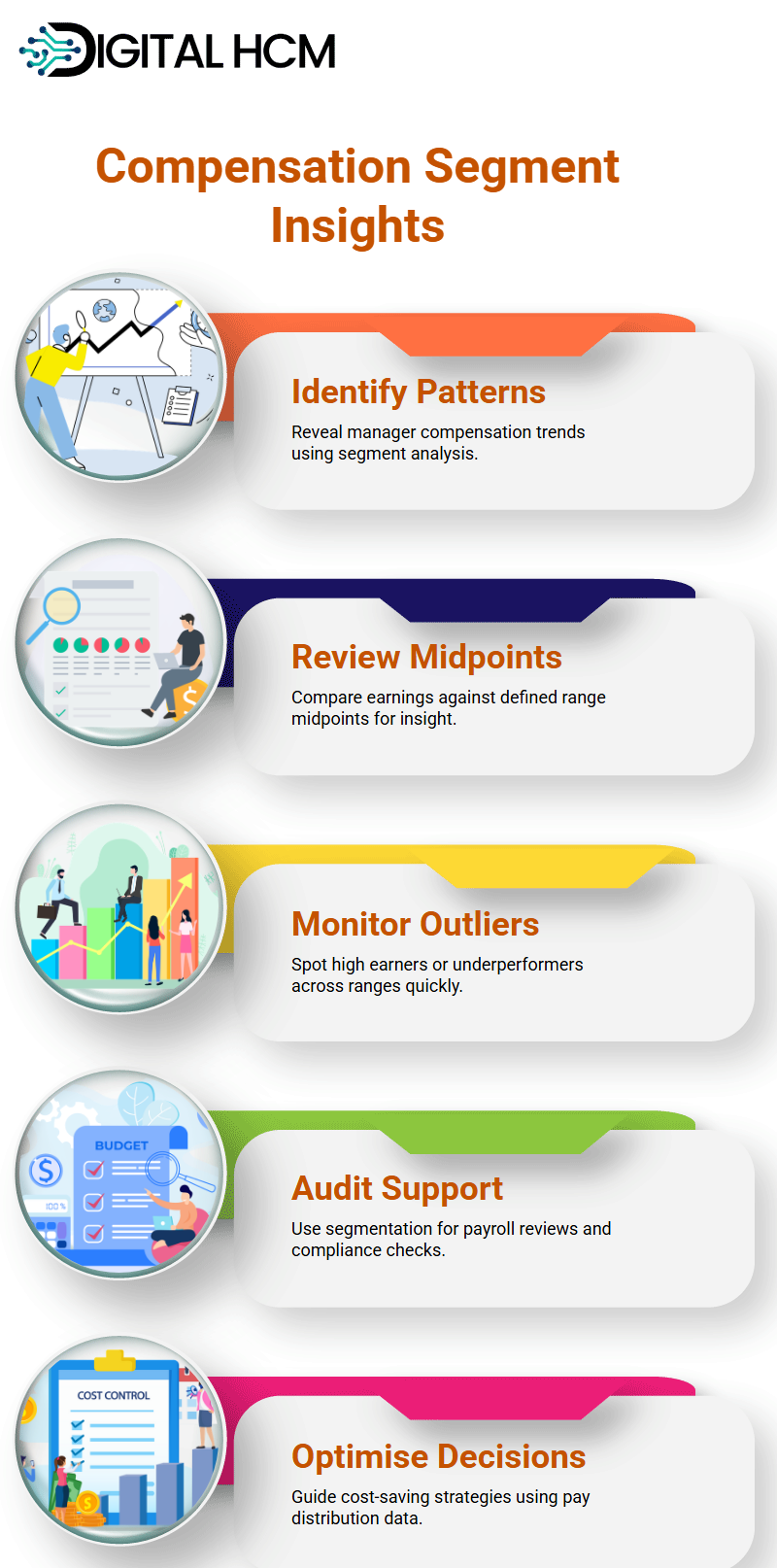
Workday HCM Compensation Grids
In Workday HCM, compensation grades can be organised using subsets called grade profiles. When creating job profiles in Workday HCM Tutorial in USA, compensation grades may be associated or added later during compensation setup; furthermore, they can be assigned directly to workers through two methods.
Linking grades directly with job profiles, which involves outlining attributes like management level and responsibilities, for instance assigning manager roles at specific grades, is considered one of the best approaches.
Alternately, eligibility rules may be used when direct associations cannot be drawn between compensation grades and factors like job family or location.
For creating compensation grades, the “Create Compensation Grade” task should be used. Although including grade profiles is optional, doing so provides greater flexibility by segmenting pay ranges within each grade.
Organisations analyse how employees are distributed within pay ranges. For instance, within a pay range spanning $50K-80K, there may be 10 employees earning between $50k-$60k K, while 20 are between 60k K – 70k K; such an analysis helps align compensation strategies with organisational objectives and contributes towards aligning pay rates accordingly.
Configuring Workday HCM Pay Ranges
Workday HCM recommends setting an initial pay range at zero when creating pay ranges in Workday HCM.
This may appear unusual, but this step indicates that specific pay ranges will later be defined within grade profiles, providing greater flexibility and precision for future grade profiles. To implement it, navigate to the compensation grid and set both minimum and maximum amounts equal to zero.
By taking this approach in the Workday HCM Tutorial in New York, you ensure a streamlined setup process and can set individual grade profiles with ease.
Setting Up Workday HCM Grade Profiles
Once those have been created, however, a final setting must be applied as this provides an interim positional placeholder until those individual grade profiles can be finalised and assigned properly to employees.
These steps also help simplify and organise setup processes when setting up grade profiles in Workday HCM.
In Workday HCM, you have four settings you can apply as placeholders until individual profile setup takes place – when working out total base pay, and final grade profiles have to be finalised individually to avoid having multiple levels.
To set them properly, using the Workday HCM Tutorial in New York is also a methodical setup of setting individual profiles until individual grade profiles in Workday HCM will take place before final grade profiles need to be finalised separately by using Workday HCM to avoid disruption from the setup process while setting up Grade Profiles.
In Workday HCM is simplified considerably by taking this route. You ensure an organised set-up process when working out finalising grade profiles within the Workday HCM setup of Setting Up Grade Profiles within the Workday HCM setup process becomes much smoother.
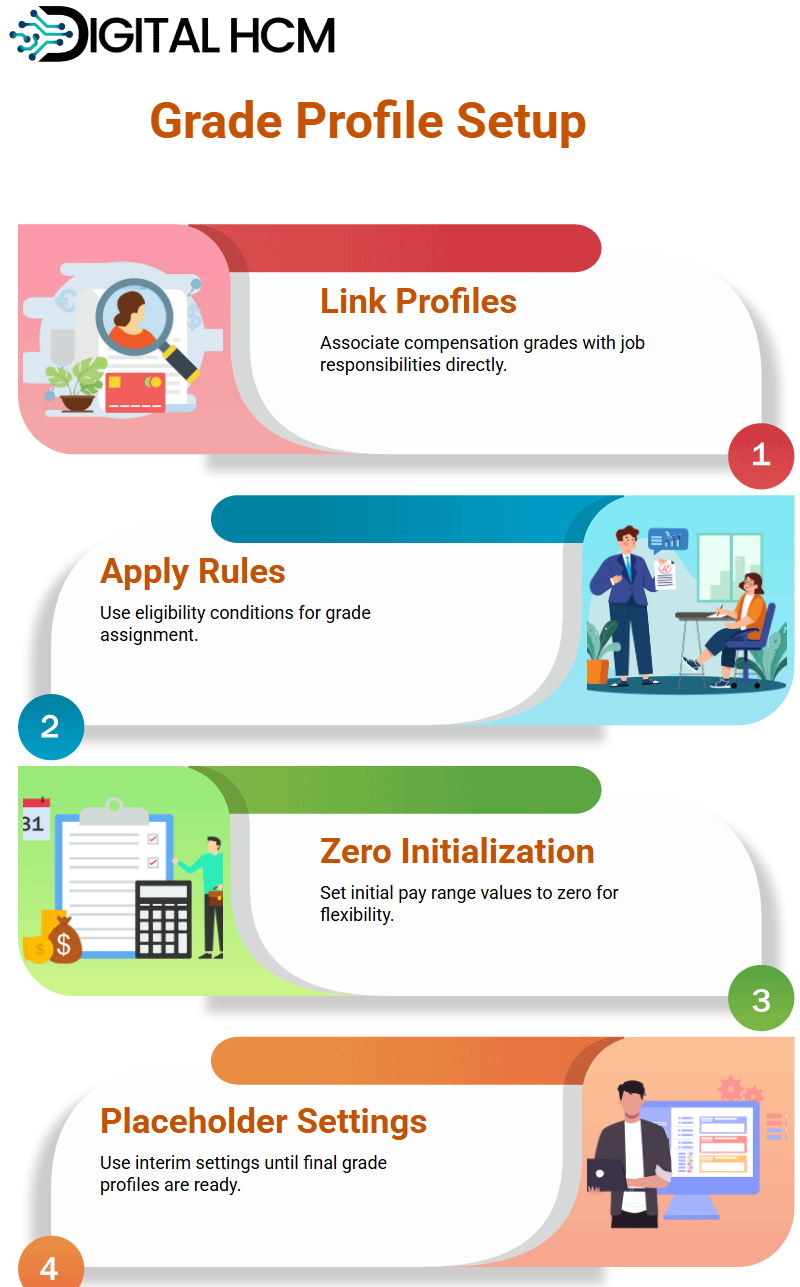
Creating Grad Profiles within Workday HCM
When Setting Up Grade Profiles in Workday HCM Tutorial in New York City, this ensures an organised set-up process becomes efficient as setting them within Workday HCM becomes the way to set up Grade Profiles within Workday.

James

Success in your career comes from curiosity, courage, and consistency. Stay committed, stay curious and never stop learning.
